Content
Categories
- General SWPanel (36)
- Administration (27)
- Database (13)
- SSL Certificates (15)
- Cloud (57)
- Cloud Storage (2)
- Containers (1)
- Backup Copies (6)
- Mail (33)
- DevOps (54)
- Domains (33)
- FTP (6)
- Hosting (31)
- Migrate Services (4)
- DNS Registers (11)
- Security (12)
- Services (8)
- Support (5)
- Users and privileges (2)
- Web (10)
- WordPress (23)
Configuration of email accounts
Mail protocols
The mail account can be configured according to two types of incoming protocol: IMAP or POP3. Outgoing mail is always configured with the SMTP protocol.
Configuring our mail account with the POP3 protocol allows us to download the messages locally (on our computer) instead of keeping them on the server, with the consequent saving of space that this entails. The messages will be saved locally, so if they are accessed from another place or device, they will not be accessible.
Configuring our e-mail account with the IMAP protocol allows us to consult the messages from any place and device because they always remain saved on the server, even preserving our folder distribution. Since the messages will be saved on the server, the use of space on the server will be higher. We can also configure how long the copies remain saved on the server.
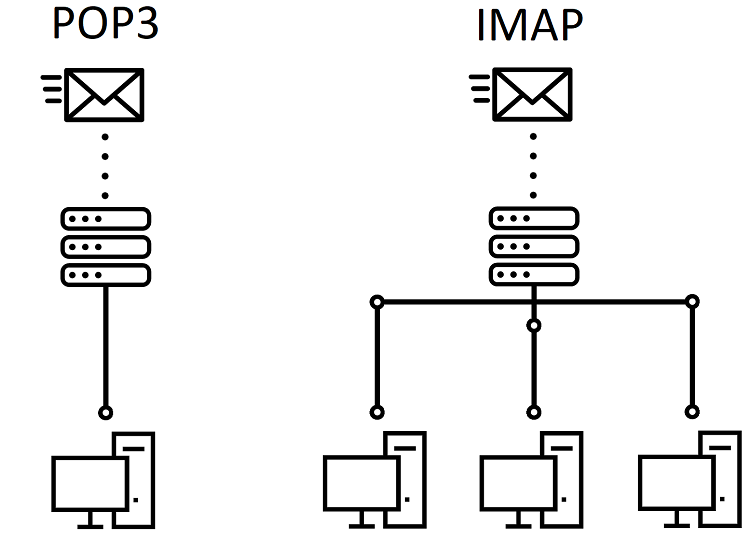
Security protocols
When we send an e-mail from any mail manager, we can do it through the standard ports or the secured ports. (at SWHosting we recommend the use of secure ports)
Secured ports
These are the ports through which encrypted mail is sent. When we activate the SSL/TLS security protocols by obtaining a Certificate for our domain, the mail configuration can be done with the ports that are commonly used for secure mail.
-
For sending mail (SMTP protocol) the Port 465 is used.
-
For receiving mail, the ports used are Port 993 for IMAP protocol and Port 995 for POP3 protocol.
How to activate the security protocols in my Hosting
By default, the Cloud comes without security protocols activated (SSL/TLS). To do so, we must activate them manually, with no activation or maintenance cost.
In the search bar at the top of the Panel, enter the name of the hosting service for which you want to activate the security protocols. Once it appears, click on it to access the Dashboard:
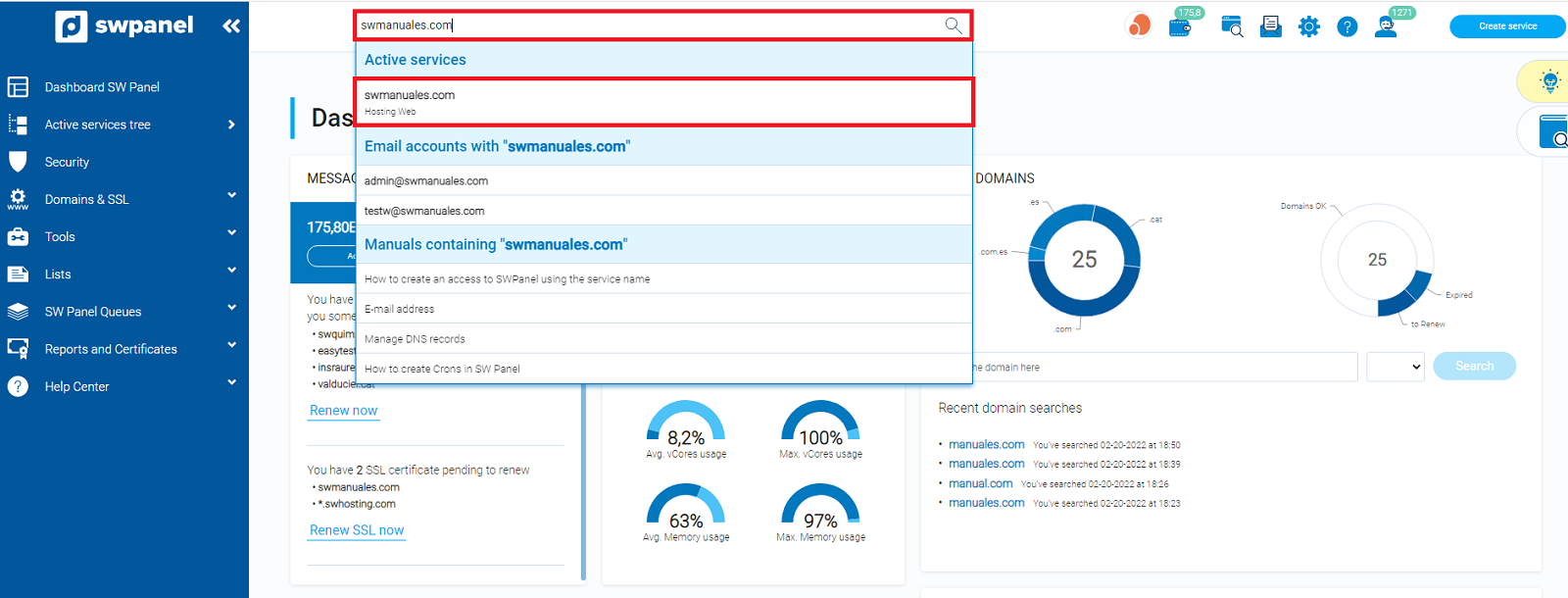
Within the Dashboard of the service, click on the right box "Available enhancements" and click on the button "Email with TLS certificate".
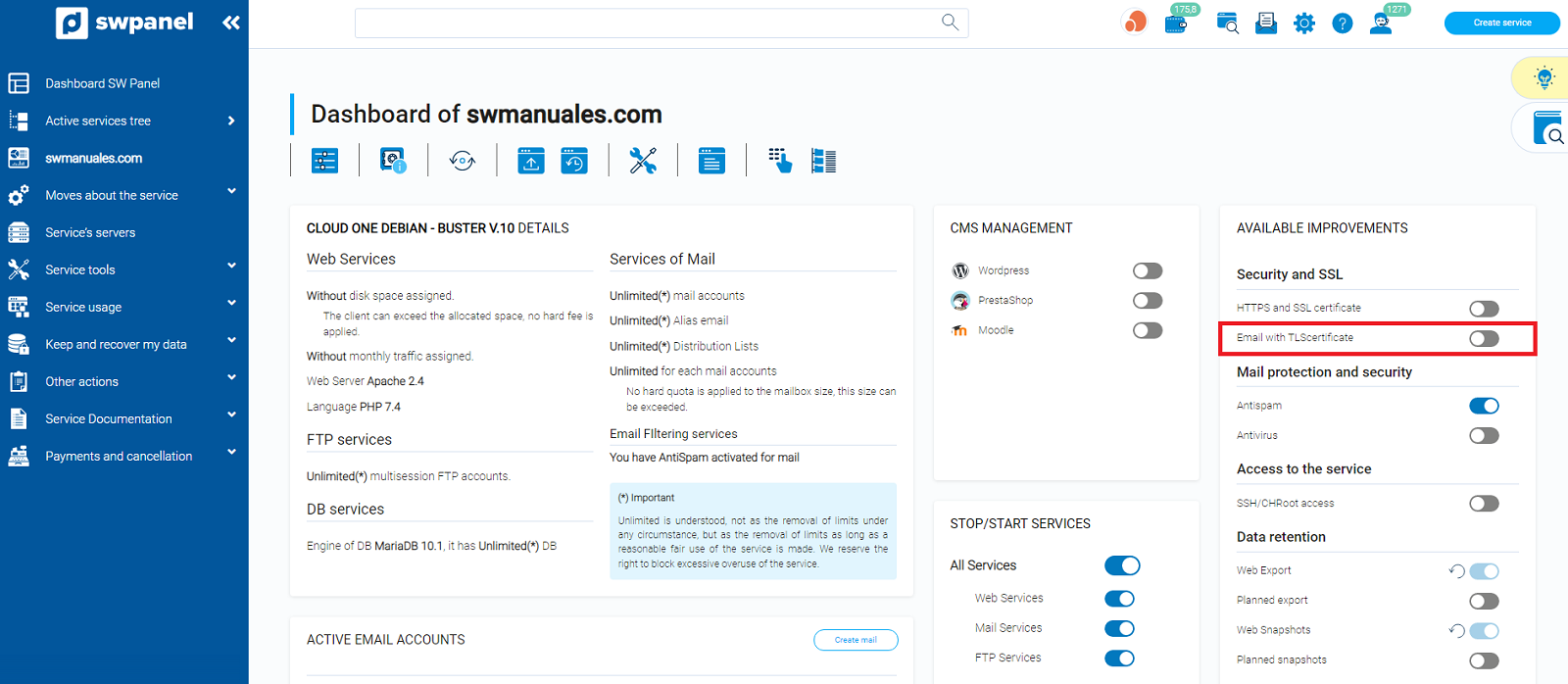
The TLS activation window will open. Check that the configuration is correct (Free Let's Encrypt Certificate) and click on "Create SSL and activate TLS":
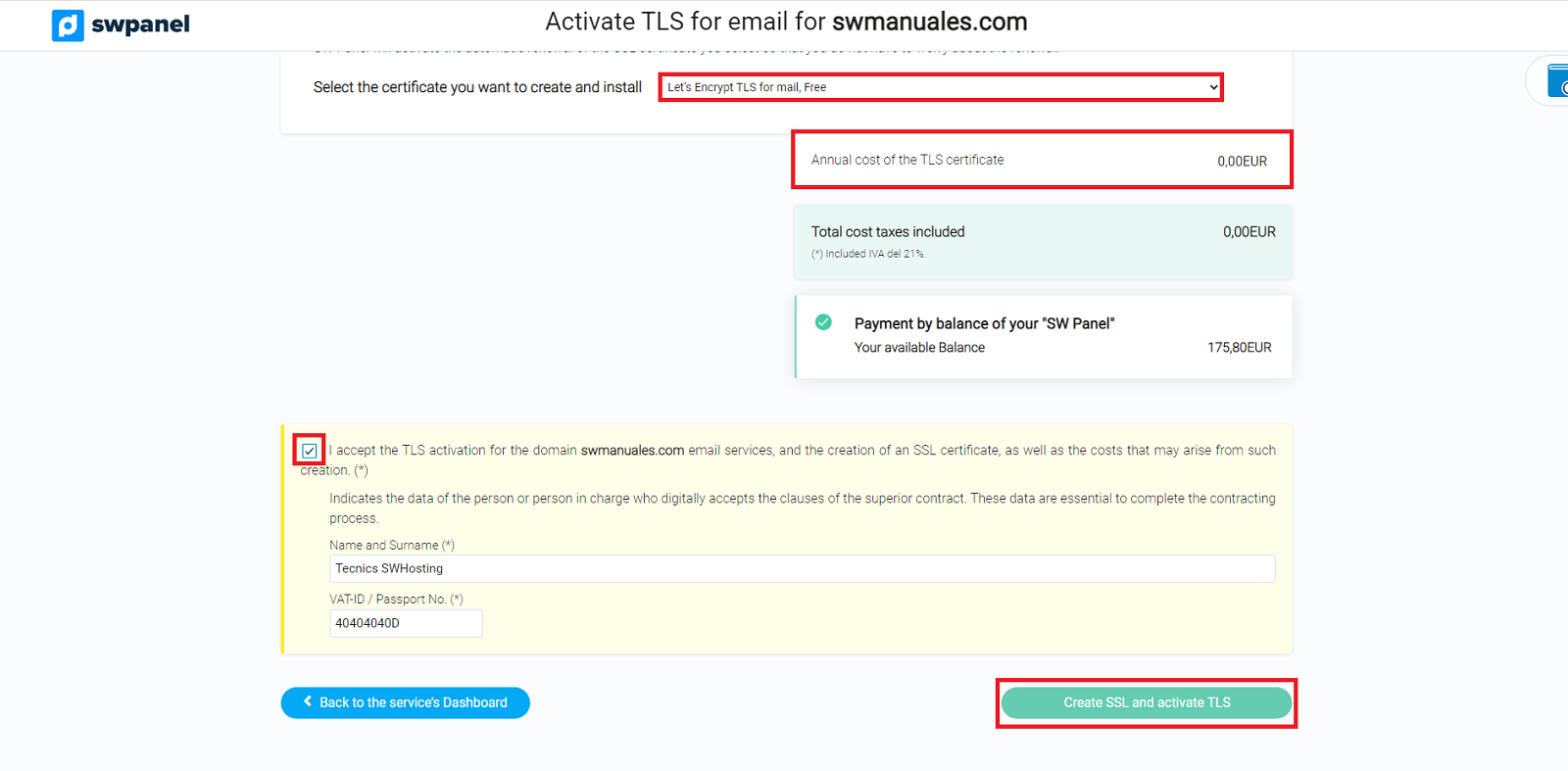
In order to create the Let's Encrypt SSL certificate, the certificate provider checks the web service on which it will be installed and it must match the server that is defined in the DNS zone of the domain. In other words, we must bear in mind that the SSL certificate can only be installed if the IP of the assigned Web server and the one defined in the A record of the DNS zone of the domain match, the domain must point correctly to our services.
If the parameters do not match, the system will not allow you to create the SSL.
As soon as the activation is completed, the "Email with TLS certificate" button will be blue (you will see some loading wheels while it is being created):
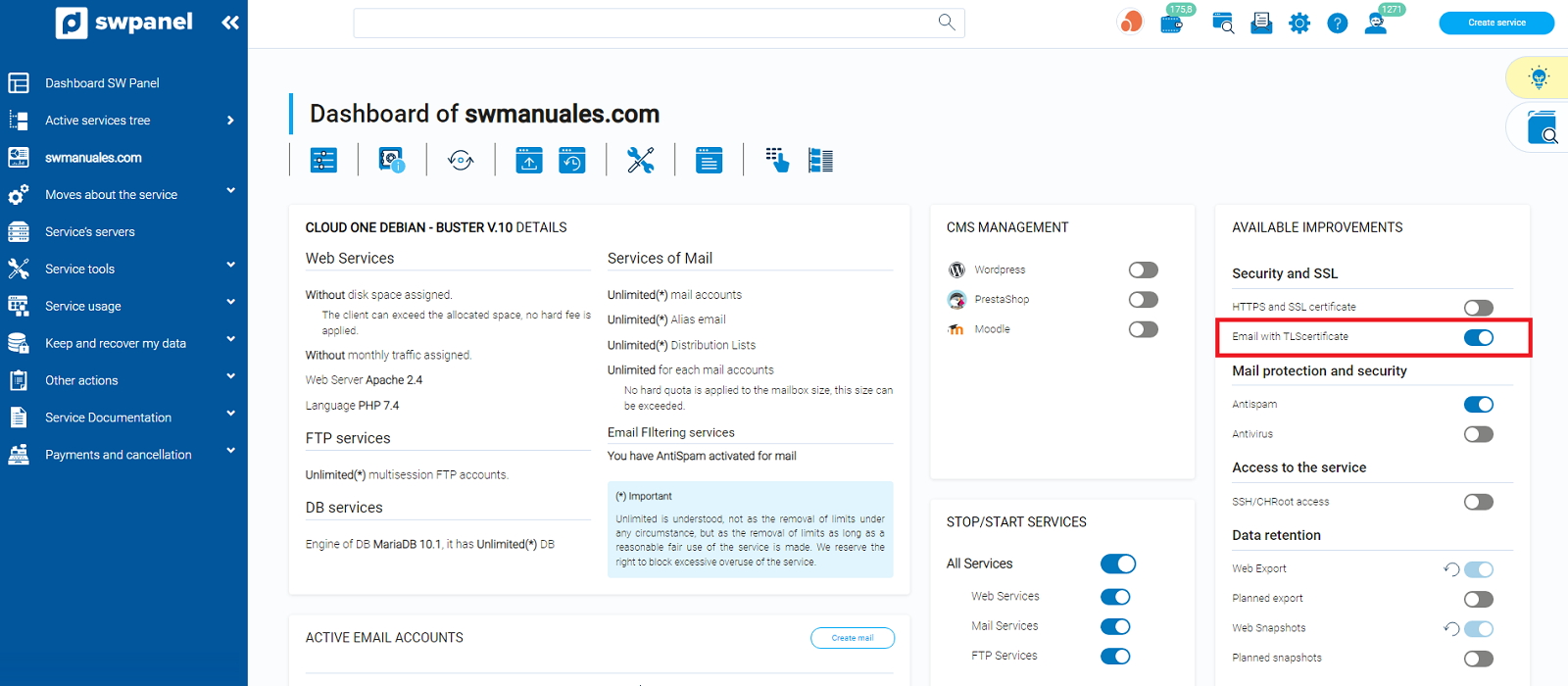
Email accounts
Within a Shared Hosting you can have the number of email accounts that are specified at the time of hiring. You can see the number of email accounts that can be created in your service, in the dashboard of the same, in the specification box.
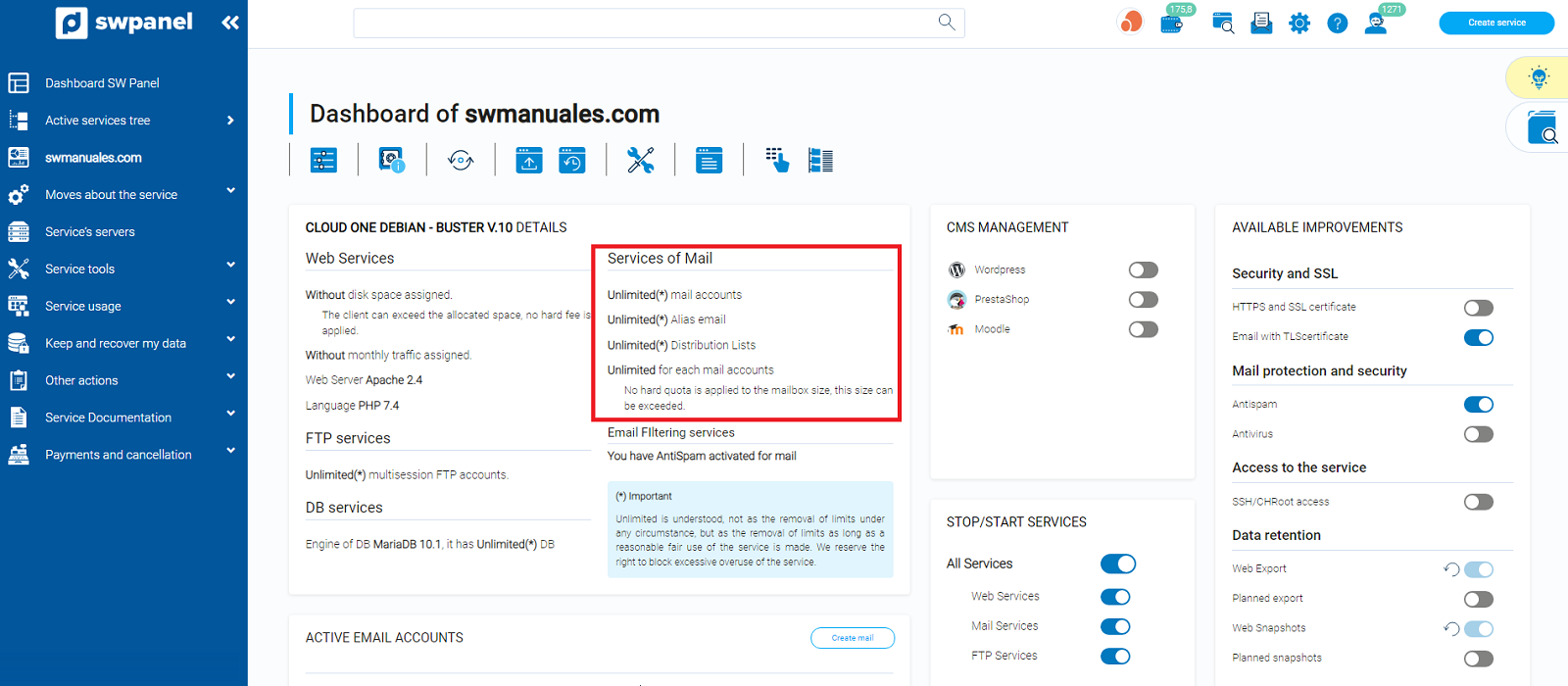
Create email accounts
To create our first email account, we access the Dashboard of the service.
In the search bar at the top of the Dashboard, enter the name of the hosting service for which you want to activate the security protocols. Once it appears, click on it to access the Dashboard:
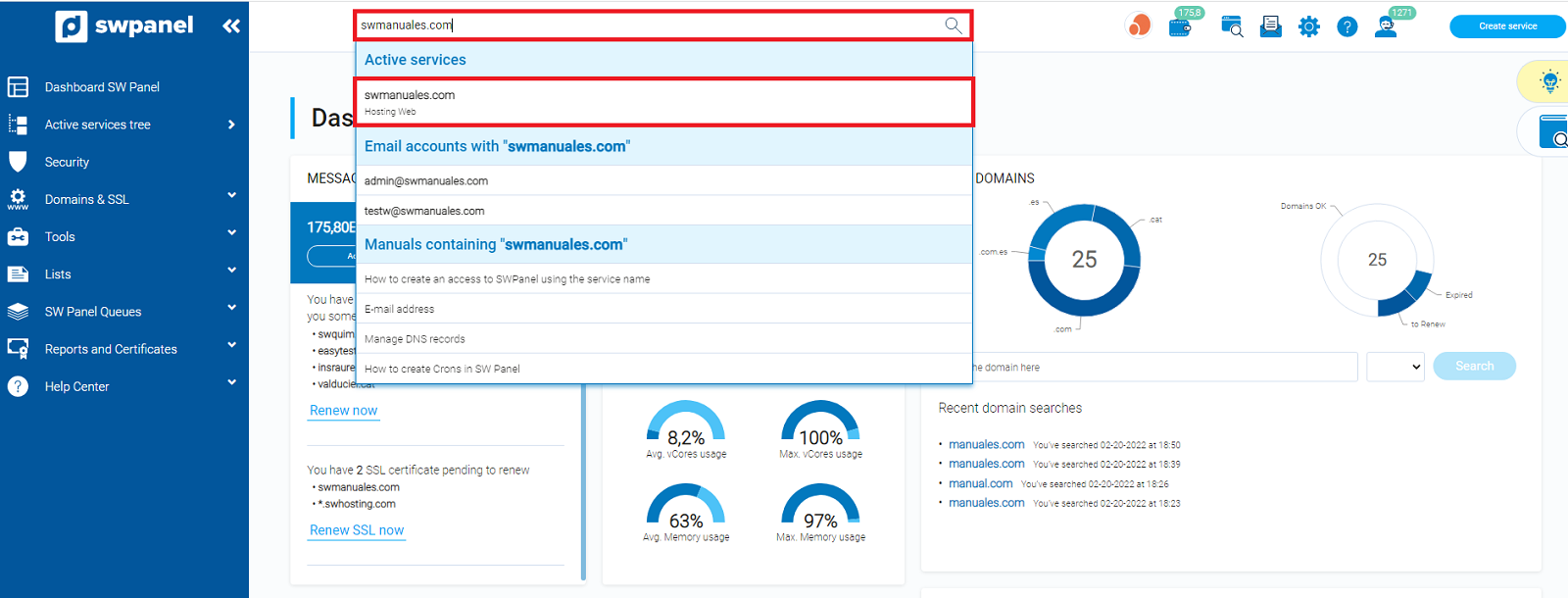
Inside the Dashboard of the service, in the left side menu, click on "Service Management" and then click on "Mail Management":
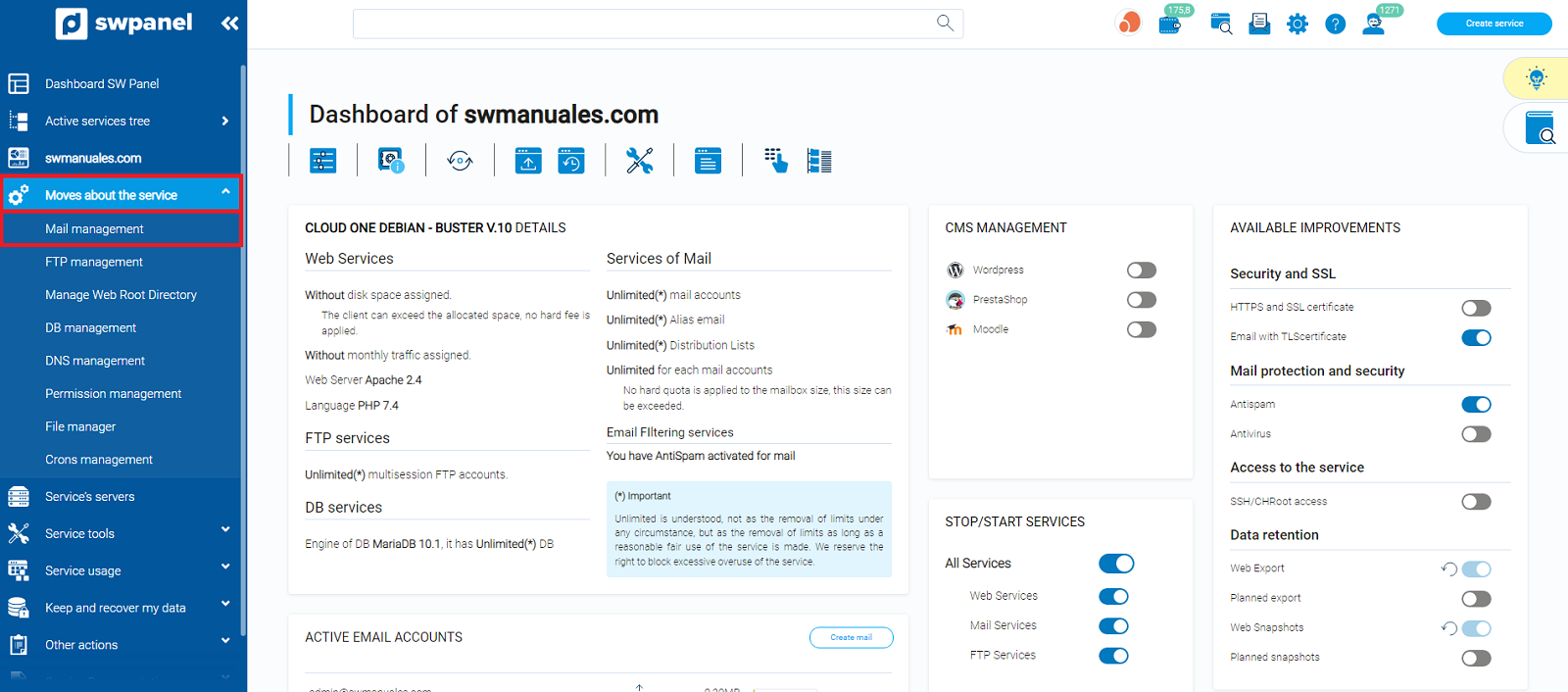
The mail screen will open. If you have not created an email account, you will see the example image. Inside the screen, click on "Create your first email account" or "Create account "**:
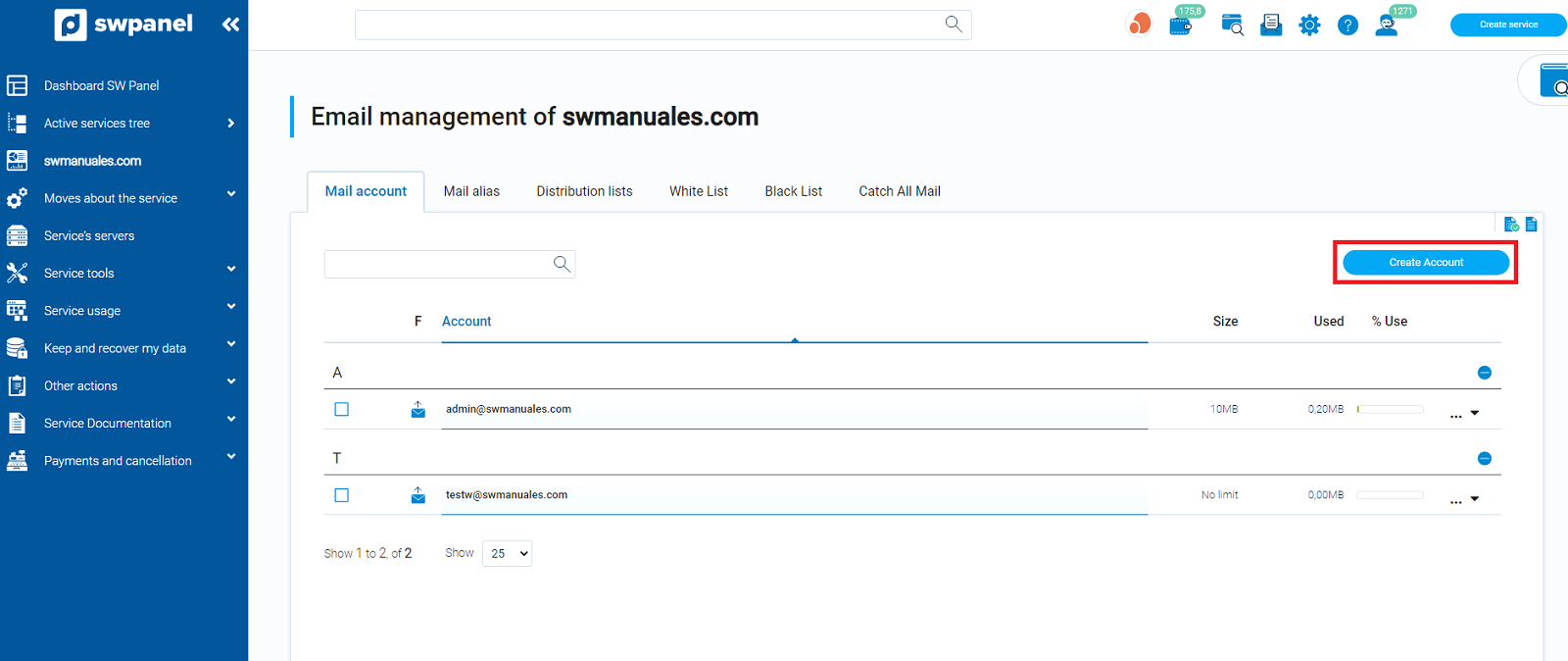
The wizard for Create email account will open (it doesn't matter which way you enter, the wizard will be the same). In the wizard we will be able to configure two elements, Account details and Mail forwarding customisation.

Account details
In this tab, we are going to customise:
-
Account Name: we specify what the account will be (for example: [email protected], [email protected], [email protected]).
-
Password: we specify what the password for accessing the email account will be. In compliance with ISO 27001, LOPD and RGPD regulations, we do not store or provide personal passwords, nor do we have access to or provide access to email account passwords, so it is important to remember this password. In case you lose it, you can change it later through the SWPanel.
-
Mailbox limitation: to limit the mailbox space to the amount we choose within the maximum allowed parameters. In case of limiting the mailbox space and the mailbox is full, messages that cannot enter due to lack of space will be returned to the sender.
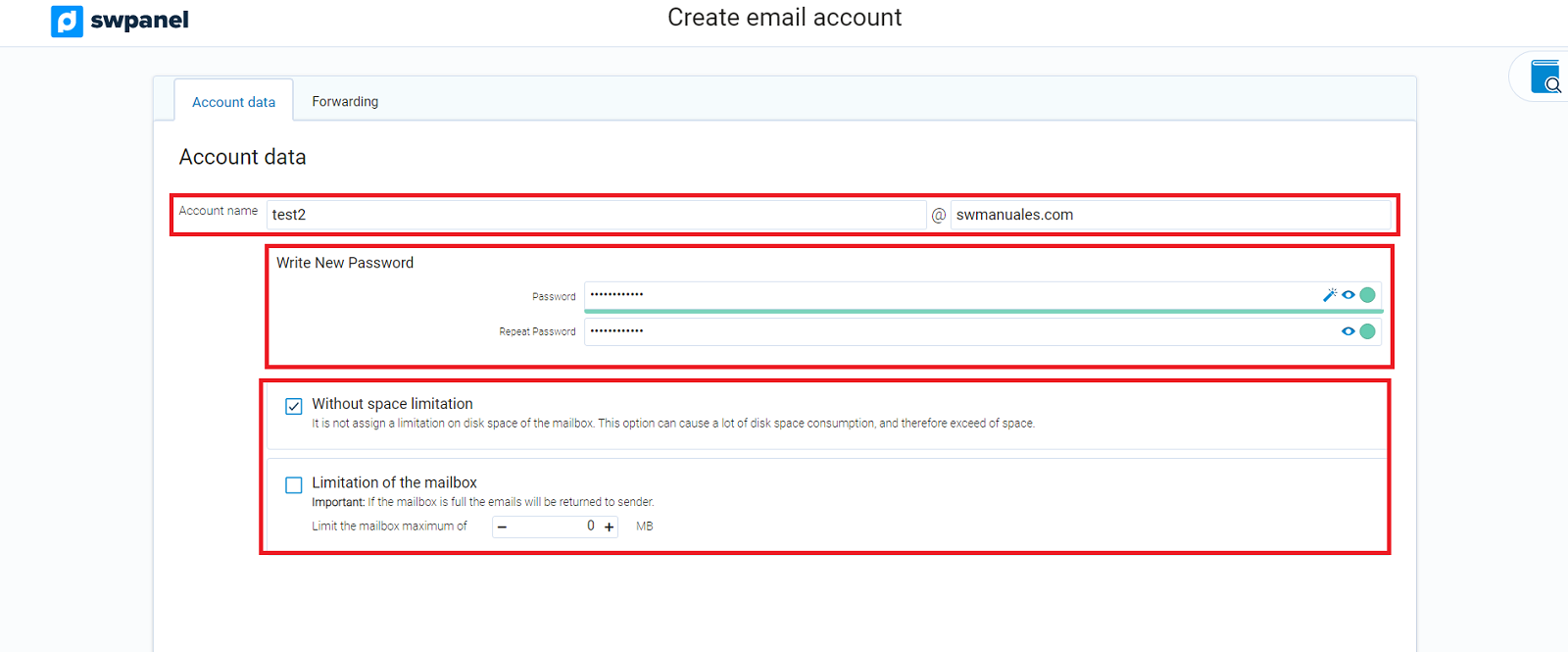
Forwarding
Optional. In this tab, we can specify if we want the emails we receive in the mailbox we are creating to be forwarded to another account. We can specify several accounts to forward to, separating the different accounts by a semicolon (;).
We can also specify whether we want to Save a copy of the mail in the account before forwarding it or not. Important, by ticking the checkbox, we select that we do want to save a copy of the email in the account. If not checked, the copy will not be saved.

Finally, click on "Create account".
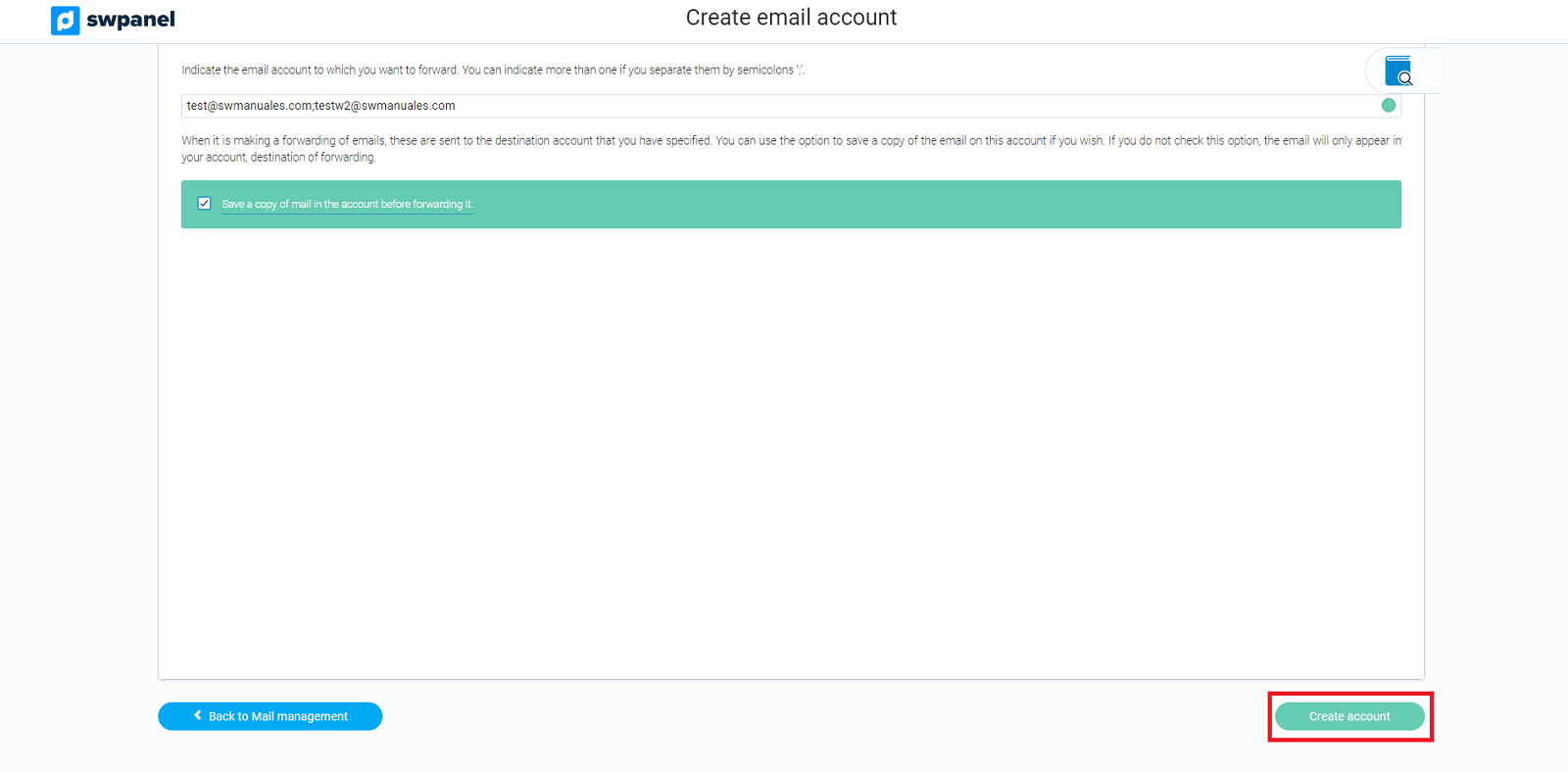
If we create multiple accounts, by default, it will not allow us to repeat any password.
Once it has been created, it will appear in the mail management screen, with the characteristics that we have configured, so that we can see all our accounts and their status at the same time:
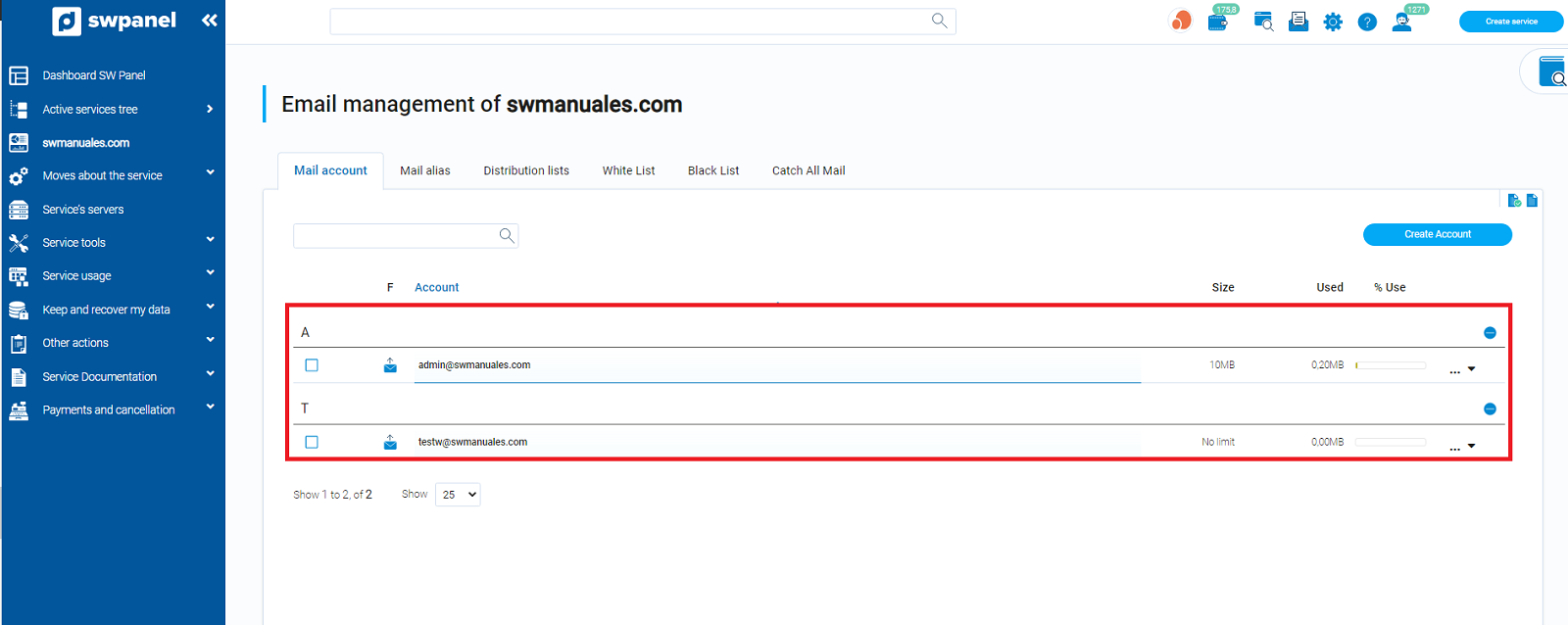
info We must take into account that for the installation of WordPress, in case you have installed it, we will need an administration email account (for example [email protected]), so if we have a Smart Hosting Free, we will not be able to create more email accounts and we will have to use the same one.
First steps to set up your email account
To configure the email account we just created (or any other we already have), we must see, first of all, the details of it.
We must take into account that each email manager is configured in a different way, so in this manual you will be able to see how to configure your email account with security and encryption protocols (SSL/TLS) in the following email managers:
How can I see the mail account details?
If we want to see the usage, redirects and automatic messages of our accounts, we must go to the mail account details.
In the search bar at the top of the Panel, enter the name of the hosting service for which you want to activate the security protocols. Once it appears, click on it to access the Dashboard:
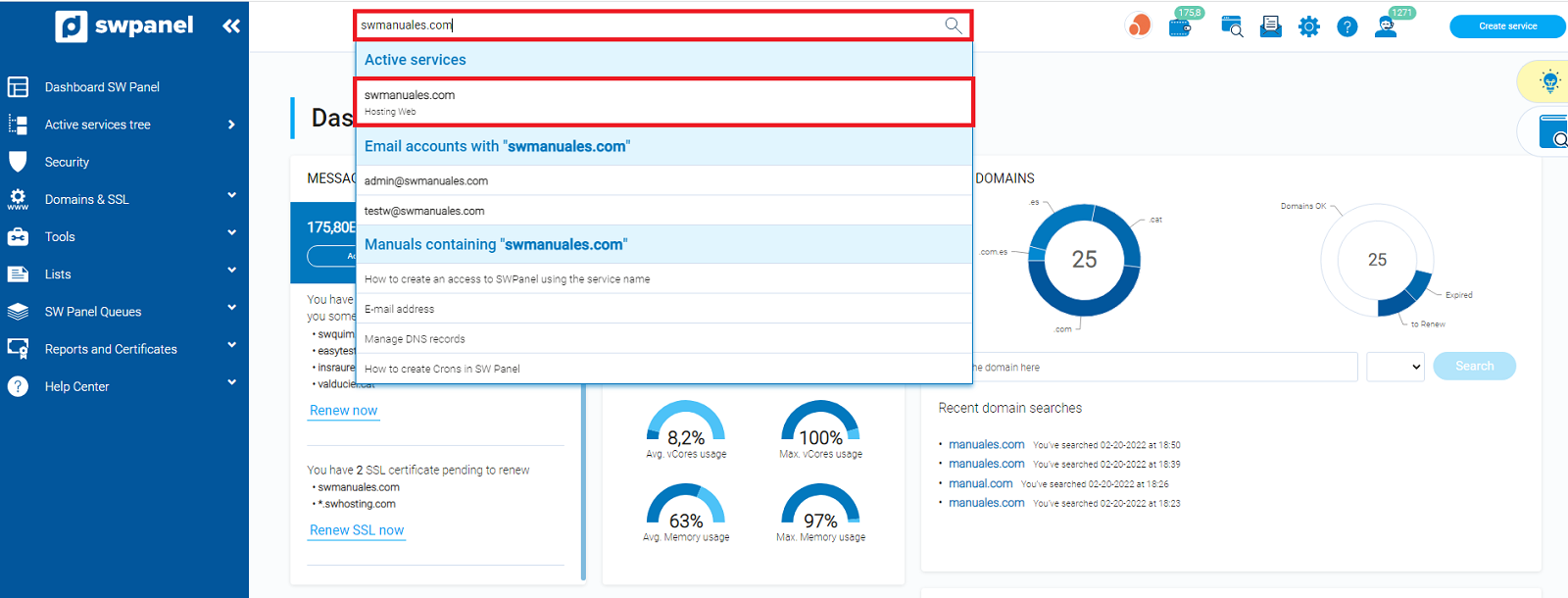
Inside the Dashboard of the service, in the left side menu, click on "Service Management" and then click on "Mail Management":
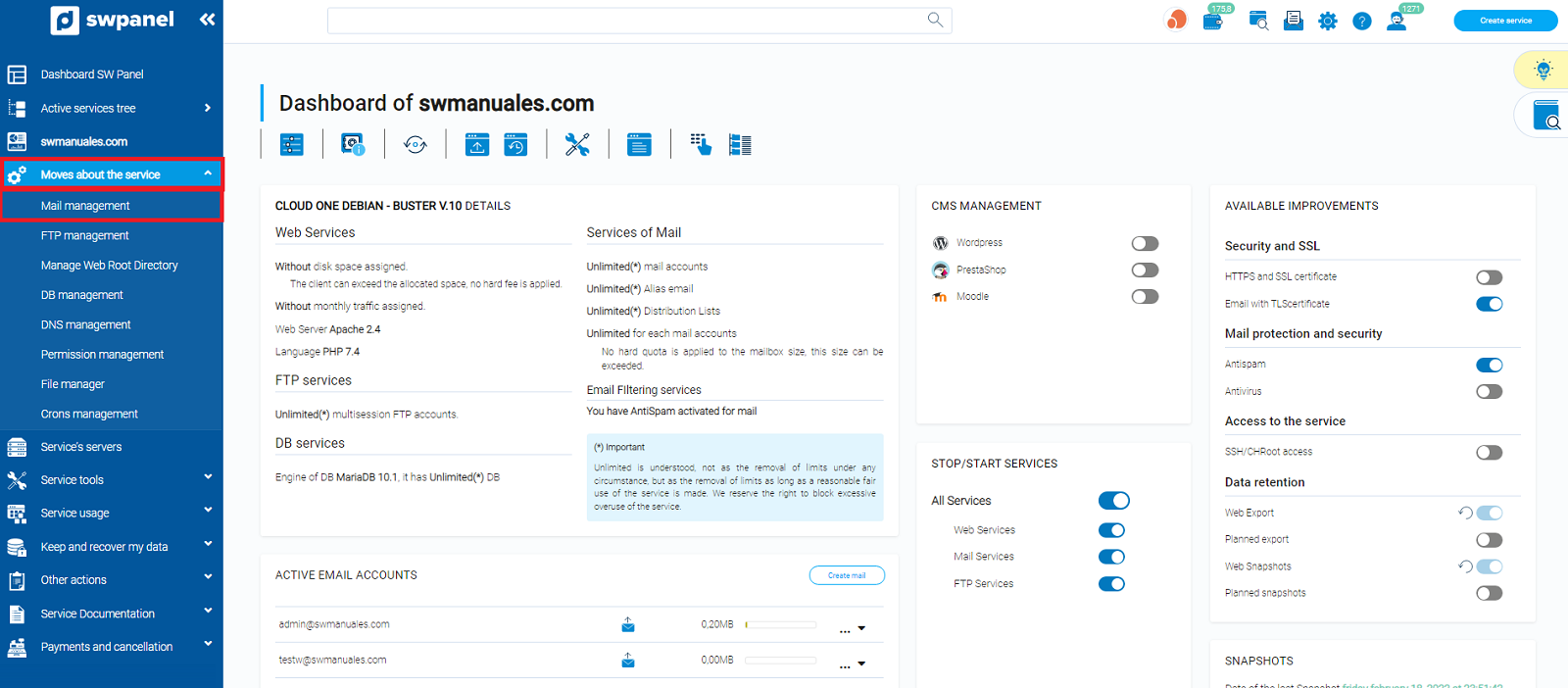
The mail screen will open. We look for the email account we want to configure in the mail manager, open the drop-down menu on the right of the account [...] and click on "Mail account details":
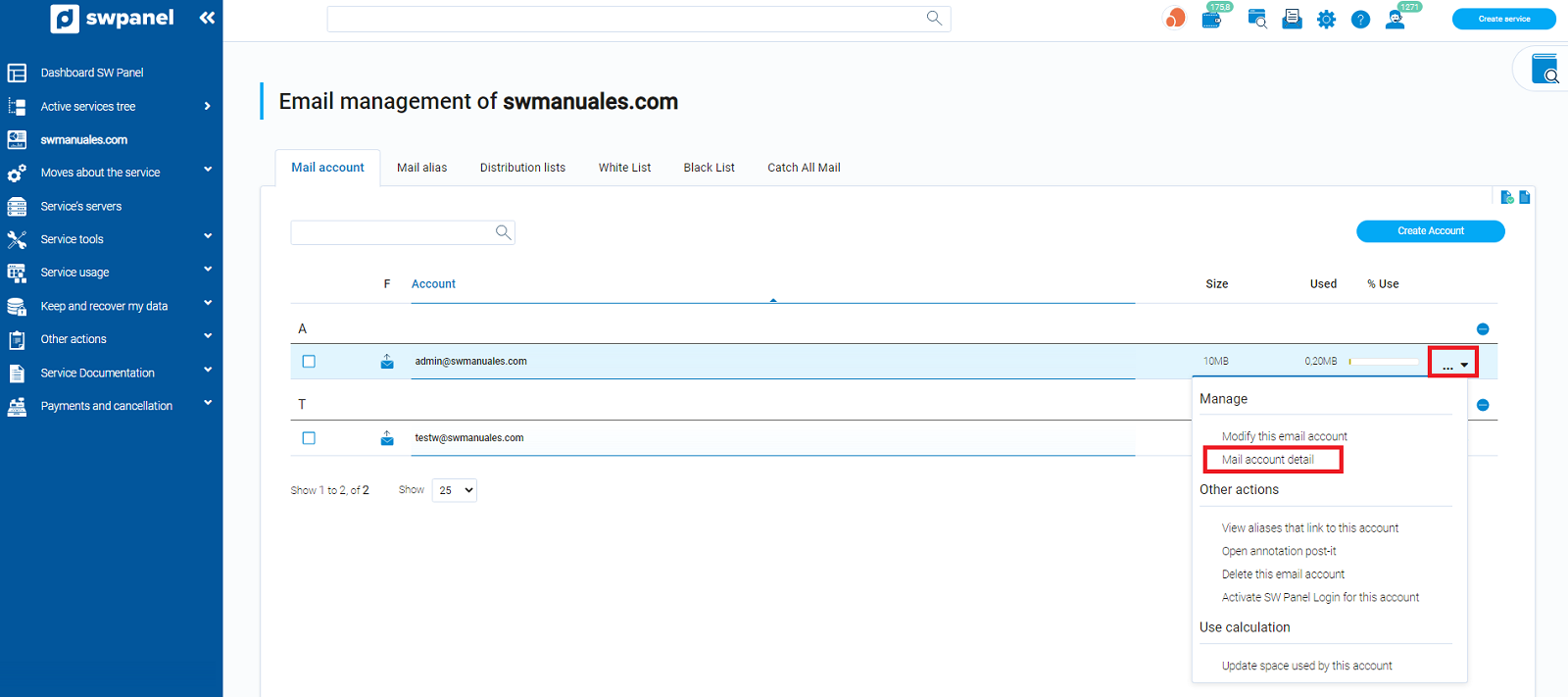
Inside the email account detail we can see different information. *Here we can only see information about the account, but we will not be able to configure anything:
-
Account name: the name of the email account.
-
Space usage information**: a graph that reports the total space allocated to the email account, the space that is occupied and the space that is available.
-
Mail forwarding**: Details of the mail forwarding that the account performs.
-
Automatic reply**: information on the automatic reply that the mail account generates as soon as it receives a message in its mailbox.
Where do I find the mail server for the configuration of my account?
In order to be able to configure the email account in any email manager, we must know which is the incoming and outgoing mail server. This information will often be configured automatically, but the manager may ask you to fill in the data manually.
In the search bar at the top of the Panel, enter the name of the hosting service in which you want to activate the security protocols. Once it appears, click on it to access the Dashboard:
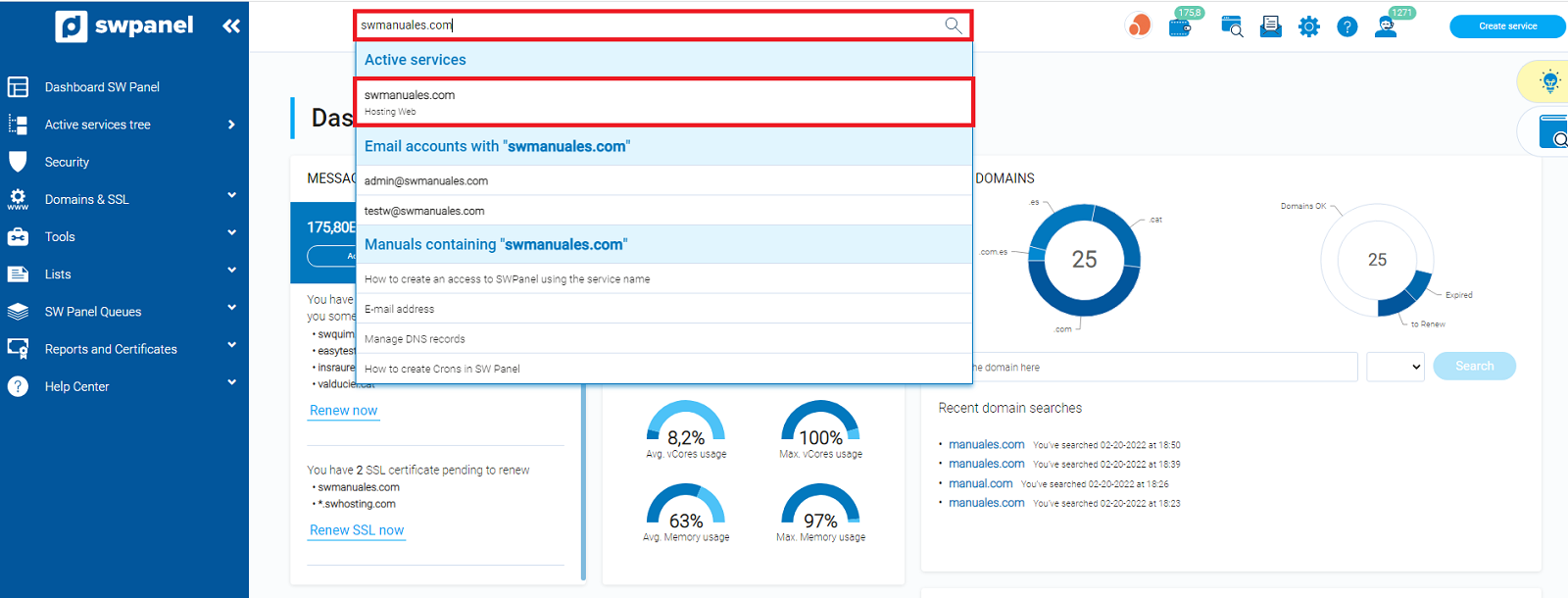
Once inside the service dashboard, in the blue side menu, click on "Service Servers":

Once inside, we will see the data corresponding to "Assigned Mail Server". We must pay attention, the server name we will use will be the one that corresponds to a cloud (for example "cm2020082610001.dnssw.net", in no case the one that corresponds to "mail.yourdomain.com"):
